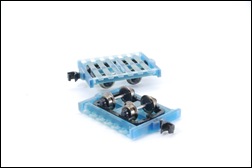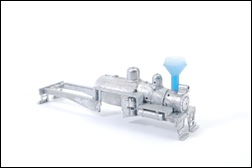I learned something interesting this week … wax is being used during the 3D-printing process. You might wonder how I found out … well that’s al quite simple. I decided to complete the first two printed wholestick trucks and added the corner posts to the trucks. After doing this, I applied the first layers of grey Tamiya primer and that’s when the trouble started …

Unfortunately the primer started peeling of directly after it had been sprayed on. This was caused by the fact that 3d-printed parts are being supported by a wax structure during the printing itself. Most of it is cleaned of afterwards, except for a thin layer …
The 3D-printing service informed me that it would be best to clean the parts with acetone, before applying the paint. Hope the printed parts will stand a nice bath of Airbrush Cleaner first …




